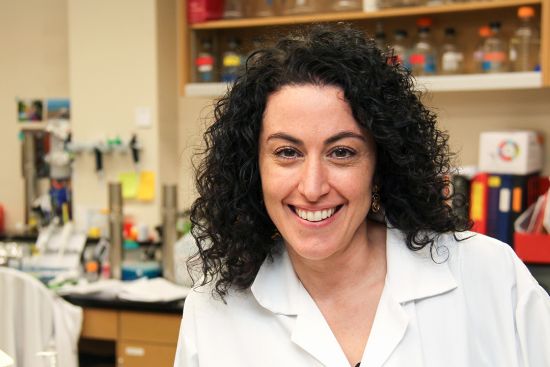|

Dr. Linda Chelico’s (PhD) lab studies APOBEC3, a protein that defends our cells against HIV. (Photo: USask/College of Medicine)
USask researchers paving the way to better HIV treatments
The human immune deficiency virus (HIV) first entered public consciousness in the early 1980s, after cases of unfamiliar and deadly illnesses began to overwhelm medical centres across North America.
By Erin Matthews, Research, Profile and Impact
Dec 23, 2024
“An estimated 42 million people have died from HIV/AIDS to date, and while people can now live full lives with access to treatments, it is still a chronic condition that people would like a cure for,” said Dr. Linda Chelico, head of the Department of Microbiology, Immunology and Biochemistry in the College of Medicine at the University of Saskatchewan (USask).
Chelico’s lab studies immune responses to HIV, particularly a family of proteins called APOBEC3 which cause mutations in the HIV virus. Her research and others’ show that the virus uses a counterattack that breaks down APOBEC3’s defences, helping HIV win and establish an infection.
“There is a battle going on in the cell,” said Chelico. “HIV also has a protein known as Vif that it uses against APOBEC3, so it’s this fight against each other.”
Researchers, including Chelico, have tried to create drugs that block Vif from interacting with APOBEC3, giving proteins the added “boost” it needs to fully inactivate the HIV virus and prevent an infection, but these blockers have been mostly ineffective.
Now, four decades after HIV was first identified, Chelico and her colleagues, including USask post-doctoral fellow Dr. Amit Gaba (PhD), have discovered previously unknown interactions between APOBEC3 and Vif proteins which offer a better map for drug design. Their findings were recently published in the American Microbiology Association’s Journal of Virology.
“Based on our data, previous inhibitors weren’t successful because we weren’t looking at the right interface between the protein interactions,” said Chelico. “We think that with a better map of this interface we can design a better inhibitor.”
Previous studies used one Vif protein and a single APOBEC3 protein to simulate conditions during an infection, but this experimental design isn’t quite measuring up to what is actually happening inside our cells. Using a range of isolated HIV viruses, each with slightly different Vif proteins, Chelico and her team found that there are differences in the Vif proteins among HIV strains and that APOBEC3s are not working individually against HIV.
“My lab established that APOBEC3s are working together during an infection, and they form a new structure,” said Chelico. “APOBEC proteins are part of a natural defence system against viruses and if we can stop that interaction with Vif. They could be a kind of natural cure.”
According to Chelico, this groundbreaking discovery could pave the way for new treatments. The potential for APOBEC proteins to serve as a natural defence against HIV brings a new wave of optimism in the fight against the virus.
“HIV still remains a global public health issue,” said Chelico. “Current treatments only suppress the virus so we’re really hopeful that our research offers a new avenue, where we can help the body’s natural defences, stopping HIV infections from taking hold.”
Want to learn more about Chelico’s revolutionizing work? Check out her 2024 TEDxUniversityofSaskatchewan talk.
Media Contact
Victoria Dinh
Media Relations Specialist
University of Saskatchewan
University Relations
Ph: 306-966-5487
victoria.dinh@usask.ca
Source: https://news.usask.ca/articles/research/2024/usask-researchers-paving-the-way-to-better-hiv-treatments.php
"Reproduced with permission - University of Saskatchewan"
University of Saskatchewan
For more HIV and AIDS News visit...
Positively Positive - Living with HIV/AIDS:
HIV/AIDS News
|